All That Is Solid
All That Is Solid is the third and final exhibition in the One Vast Library program and examines the climate crisis through an extractive view. Scholar Macarena Gómez-Barris defines this view as one that “facilitates the reorganization of territories, populations, and plant and animal life into extractible data and natural resources for material and immaterial accumulation”. For Gómez-Barris, this view is also deeply linked with the colonial gaze, especially lands impacted by the violent erasure of terra nullius and ensuing privatisation of stolen lands as property.
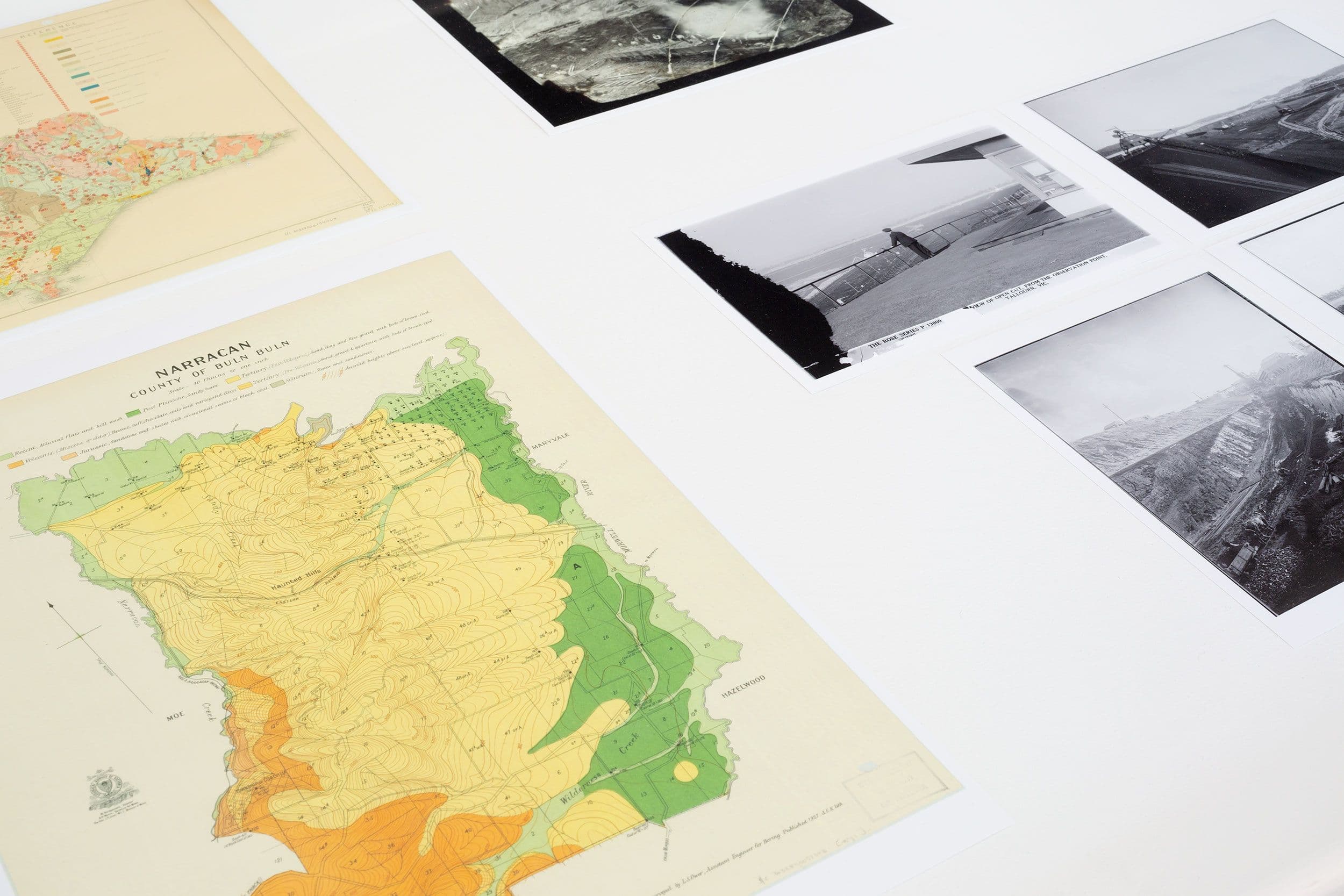
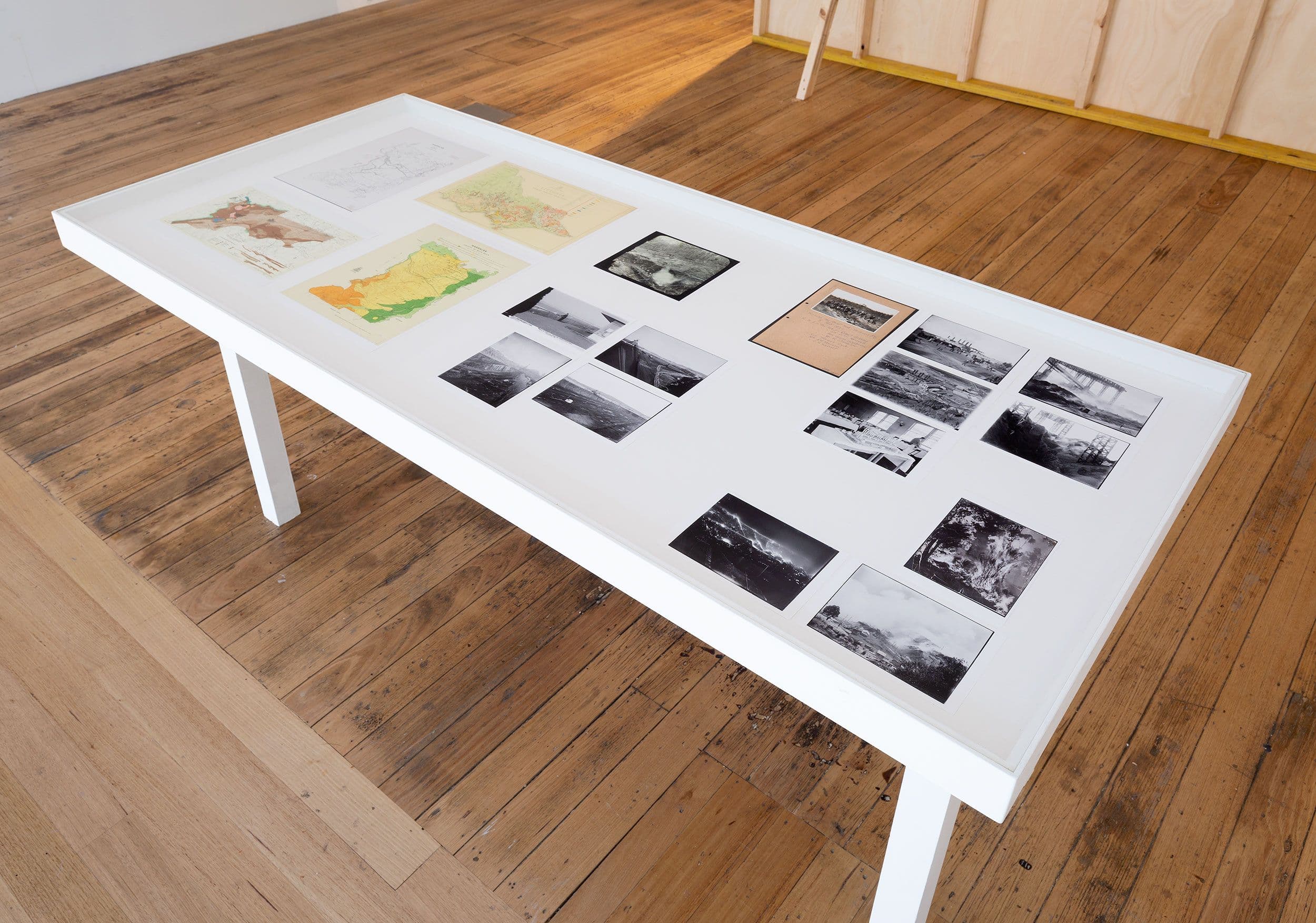
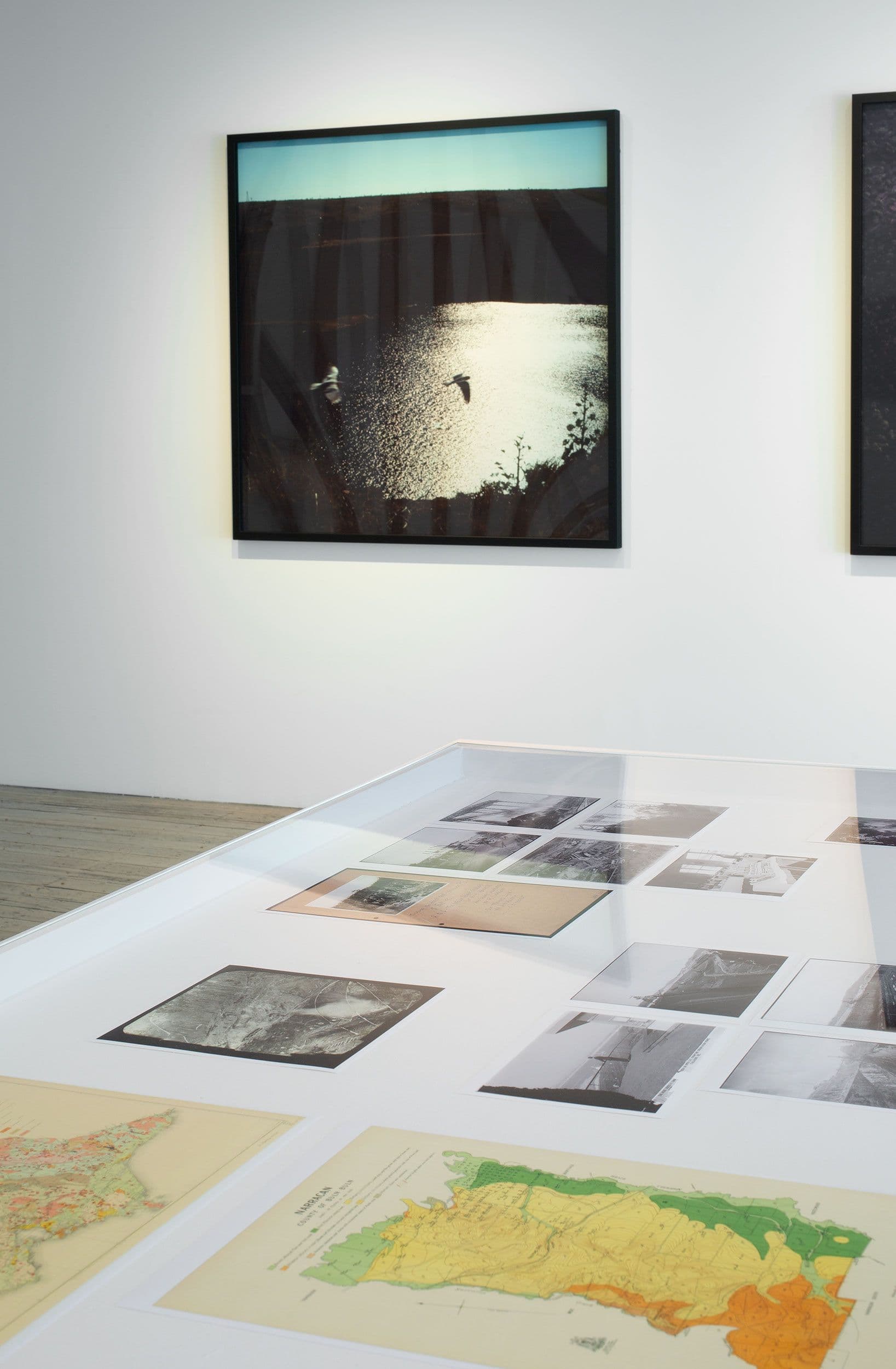
Selected images of Yallourn township, surrounds, and open cut coal mine, Latrobe Valley, VIC
Images reprinted courtesy of State Library of Victoria, Melbourne. Photo: Christian Capurro.
The exhibition begins with a vitrine display of historical imagery of Victoria’s early embeddedness within extractive logics and their interconnection with colonialism. Photographs and survey maps document the ongoing geological examination and mining of the Latrobe Valley, part of the lands and waters of the Gunaikurnai nation. This includes the cold division of the earth following the principles of Torrens Title, a South Australian invention of 1858 for recording and registering land.
The square-portioned survey map shows this administrative butchering’s quiet efficiency. The dismemberment of these places also extends to much more visible registers of violence. This display focuses particularly on a history of the largest open cut coal mine in Australia in Yallourn. Including the neighbouring Hazelwood and Loy Yang mines, these wounds still dominate the Valley; their excavation carried out by the settler colonial industrial complex since the 1880s. The brown coal dug up from the earth was fed into on-site power stations, or transformed into briquettes, to be burnt in domestic quarters for warmth. In one curious photograph, Yallourn’s Power Station is recreated as a decadent celebration cake. Echoing this consumptive mentality, the very township of Yallourn where workers lived around the mine and power station for more than half a century was itself eaten up; only built in the 1920s, it was demolished by the 1980s to allow the extraction of the coal that rested beneath it.
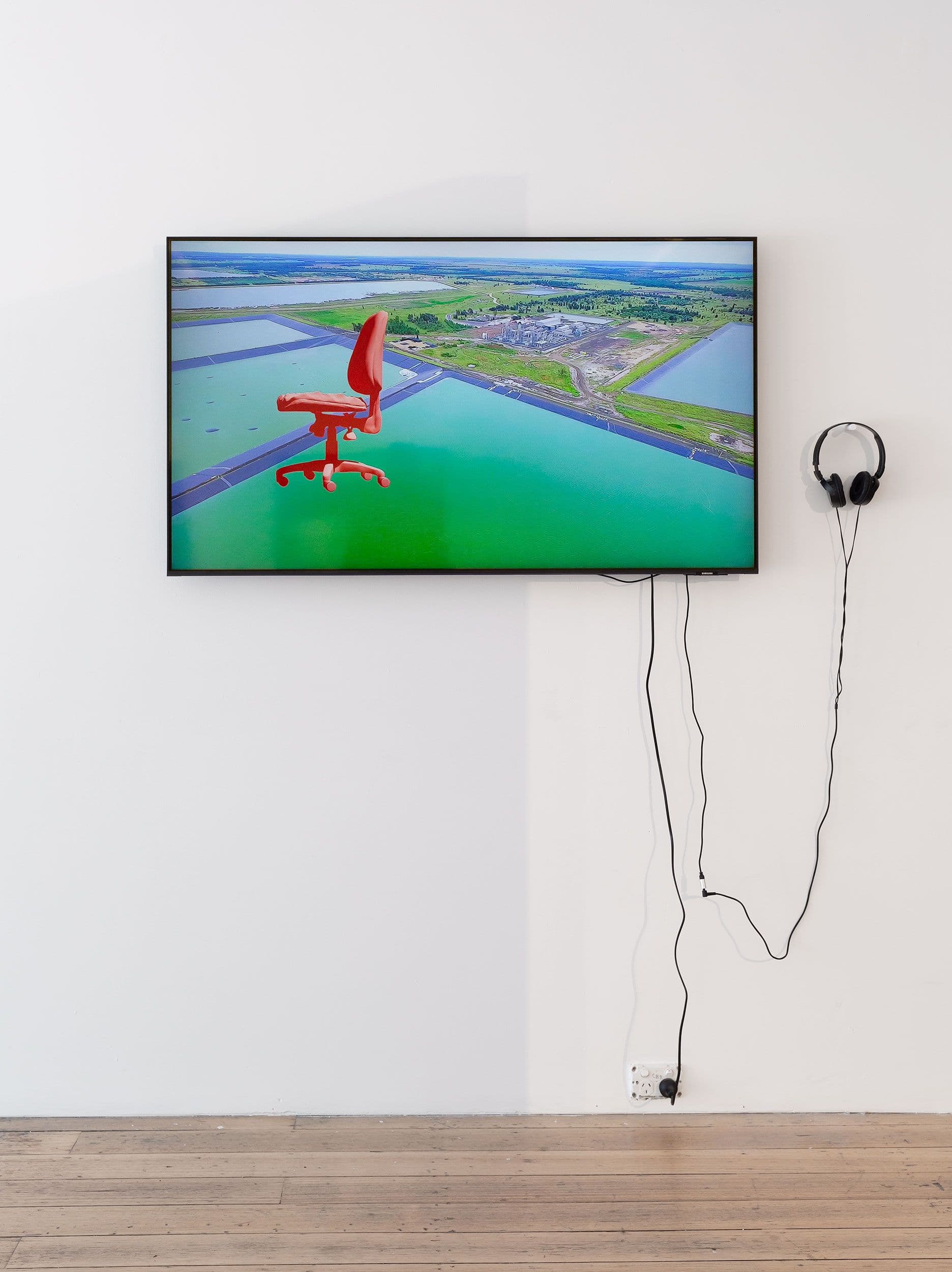
Rachel O’Reilly, Drawing Rights, 2018, HD video with sound, 17:09 mins, Commissioned by Frontier Imaginaries and the Van Abbemuseum. Courtesy of the artist and Milani Gallery, Brisbane. Director/Research/Voiceover: Rachel O’Reilly. Visuals: Pa.LaC.E (Valle Medina and Benjamin Reynolds). Editing: Sebastian Bodirsky. Sound: Tyler Friedman. Advisory: Juliri Ingra (Gooreng Gooreng), Roxley Foley (Gumbaynggirr). Photo: Christian Capurro
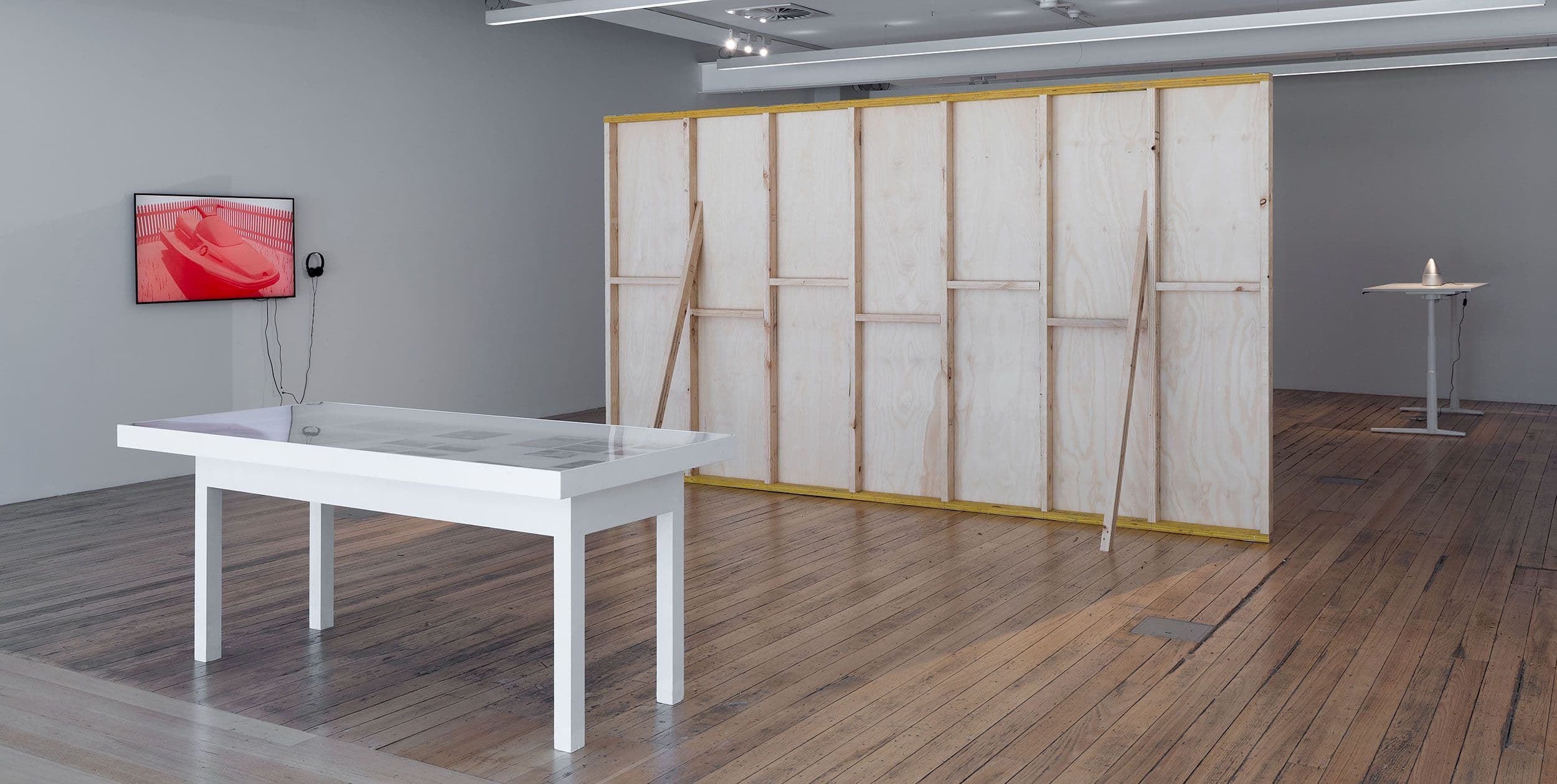
All That Is Solid, installation view, MADA Gallery, Monash University, Naarm/Melbourne, 2022 photo: Christian Capurro.
Clearly, this voracious appetite is not easily quenched. As Rachel O’Reilly describes through voiceover in Drawing Rights (2018), “in the settler world picture, the only barriers to extraction are distance, credit, and the elements themselves.” O’Reilly and her collaborators on this short film reflect this omnipresent extractive view through a mixture of aerial drone footage of gas sites on Gooreng Gooreng lands with animations of the peoples, infrastructure and nature that populates it. O’Reilly’s detailed research is visualised in the form of a video essay, scrutinising the desires of state and federal governments and their dereliction of their duties to the populace when under the influence of global capital. Simryn Gill’s Eyes and Storms series (2012) also takes to the skies to depict varying man-made ‘eyes’ in the landscape, dams like those in #22, and more violent punctures caused by extraction – open cut mines still in use, such as the West Australian mine seen in #21; and those exhausted of their bounty, decommissioned and ‘rewilded’ to become a lake like that in #20. The birds that fly past the lake in the latter appear to read this body of water as it is: a dissatisfying forgery of what once existed.
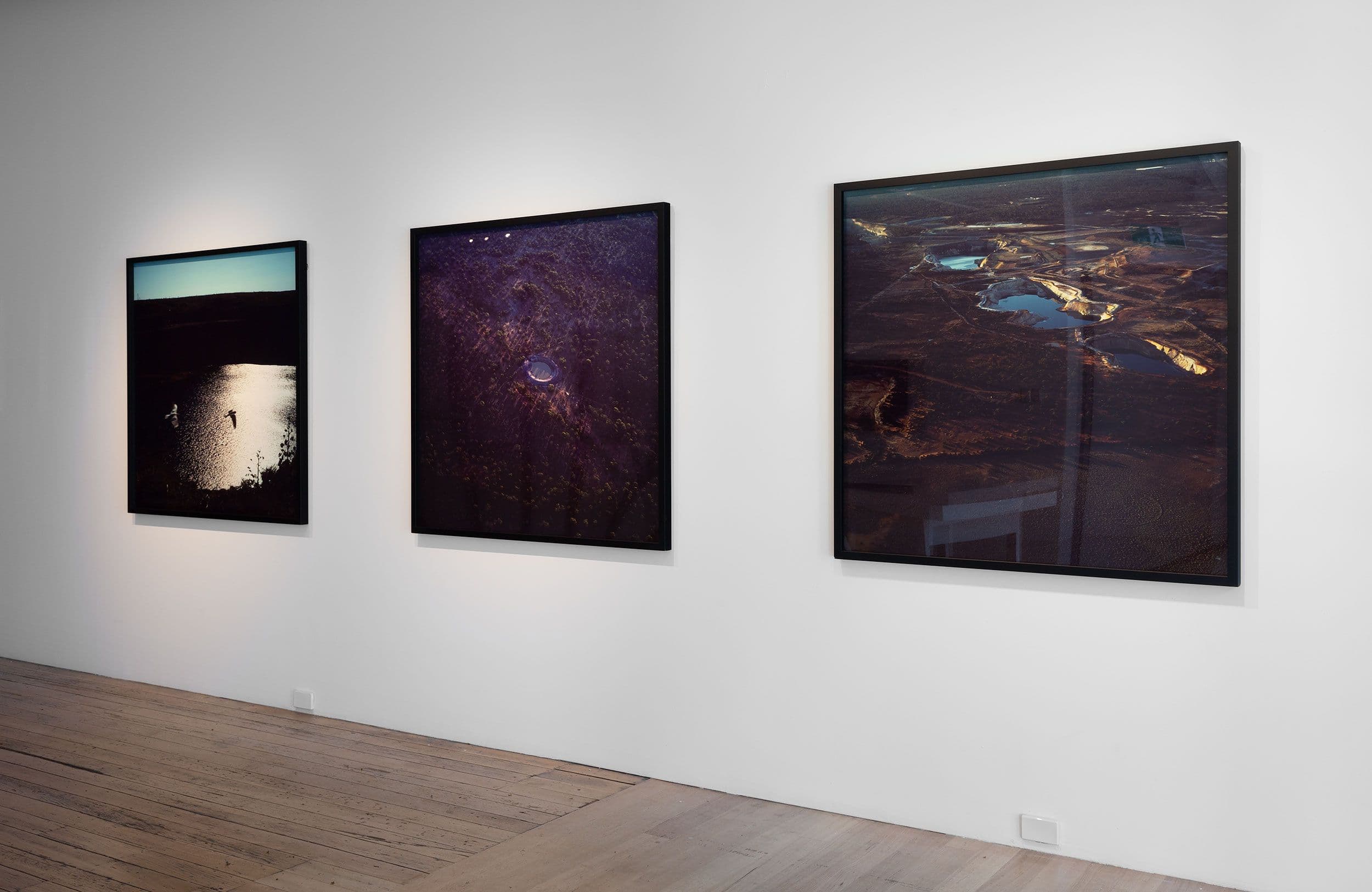
Simryn Gill, Eyes and Storms no.20, 21, & 22 2012, Ilfochrome print mounted on aluminium, 125 x 125 cm (framed) each, Courtesy of the artist and Utopia Art, Sydney. © Simryn Gill. Photo: Christian Capurro.

All That Is Solid, installation view, MADA Gallery, Monash University, Naarm/Melbourne, 2022 photo: Christian Capurro.
The second section of All That Is Solid places the desires of the individual in conflict with the needs of the collective within the context of climate crisis. In Gavin Bell, Jarrah de Kuijer, and Simon McGlinn’s Untitled (2012/2022), the artists worked with a “scent marketing agency” to recreate the smell of a freshly unboxed MacBook Pro. The signature scent oil is aerated within an anodized silver diffuser within the gallery space and presented on a standing desk set to nose height. With the sleek product itself in absentia, the audience’s attention is drawn to smell as a vital terrain in commercial space for alluring customers. Through the MacBook’s absence, the work also alludes to the drive for material and physical reduction of technology, and its shift into the “cloud” – in reality the movement of personal information from local storage into corporate-held physical data structures. Louis Henderson’s All That is Solid (2014) punctures this illusion of technological progress, what Henderson calls “the capitalist myth of the immateriality of new technology”. Henderson, who has familial ties to the West Coast of Africa, pairs audio of Steve Jobs’ Apple iCloud keynote with footage of the electronic waste grounds of Agbogbloshie in Accra, Ghana. In one sequence, the discarded plastic casings of technology are set alight to extract the valuable metals contained within the products. A dark plume from the fire belches upwards to the sky. The metal is sold and reformed to become new objects. As Henderson describes pointedly “it is a strange system of recycling, a kind of reverse neocolonial mining, whereby the African is searching for mineral resources in the materials of Europe.” Henderson’s work demonstrates that the dream of a minimal lifestyle has heavy, violent repercussions for those trapped within class and racialized systems of oppression.
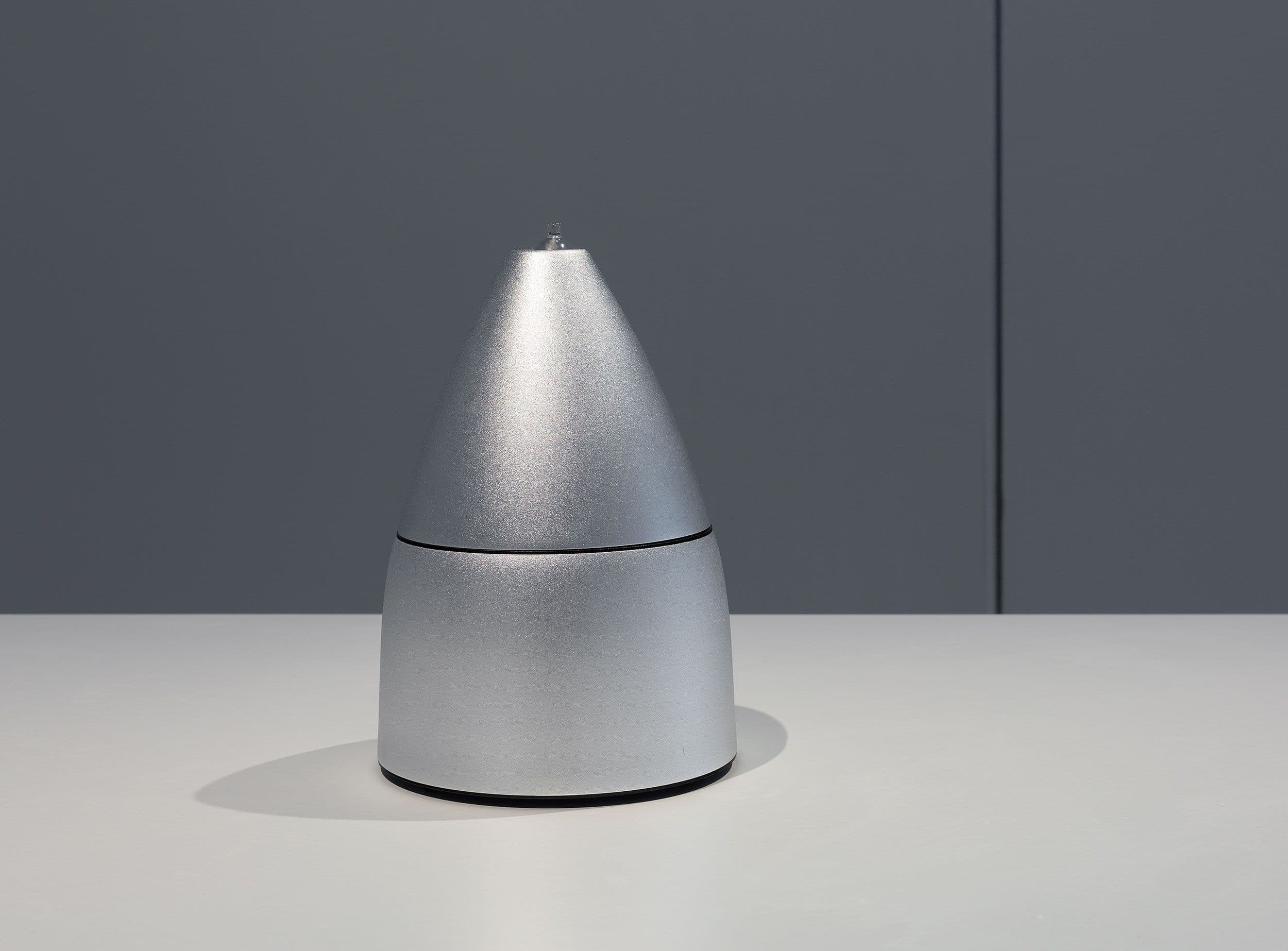
Gavin Bell, Jarrah de Kuijer & Simon McGlinn, Untitled, 2012/2022, Aromax diffuser – anodised aluminium silver finish, scent of new Apple 13 Inch MacBook Pro replicated through Air-Aroma in the south of France, standing desk at nose height, 23 x 16 cm; 180 x 80 x 2.5 cm, Courtesy of the artists. Photo: Christian Capurro.
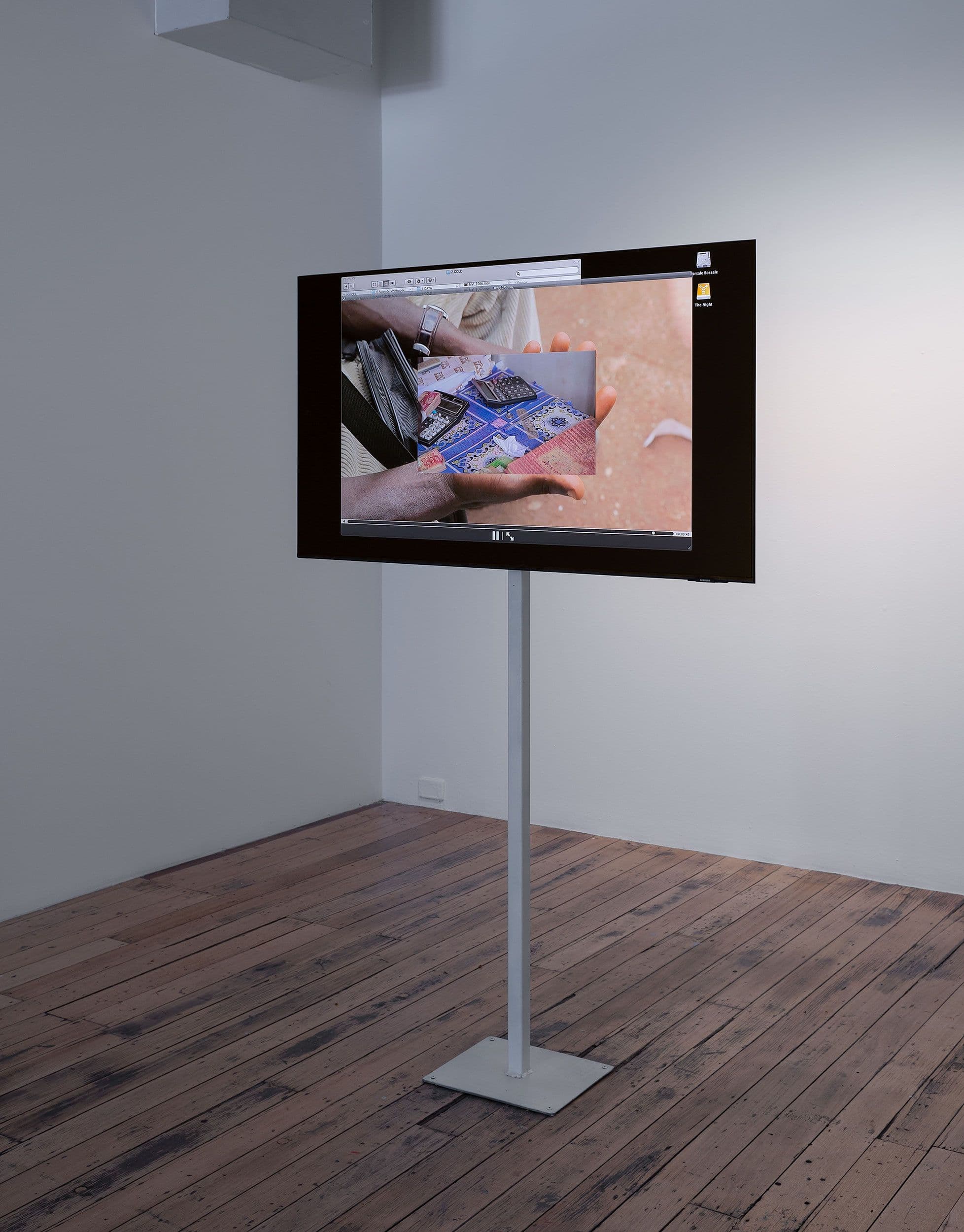
Louis Henderson, All That is Solid, 2014, HD video, colour/B&W, sound, 15:00 min, Courtesy of the artist and LUX, London. Photo: Christian Capurro.
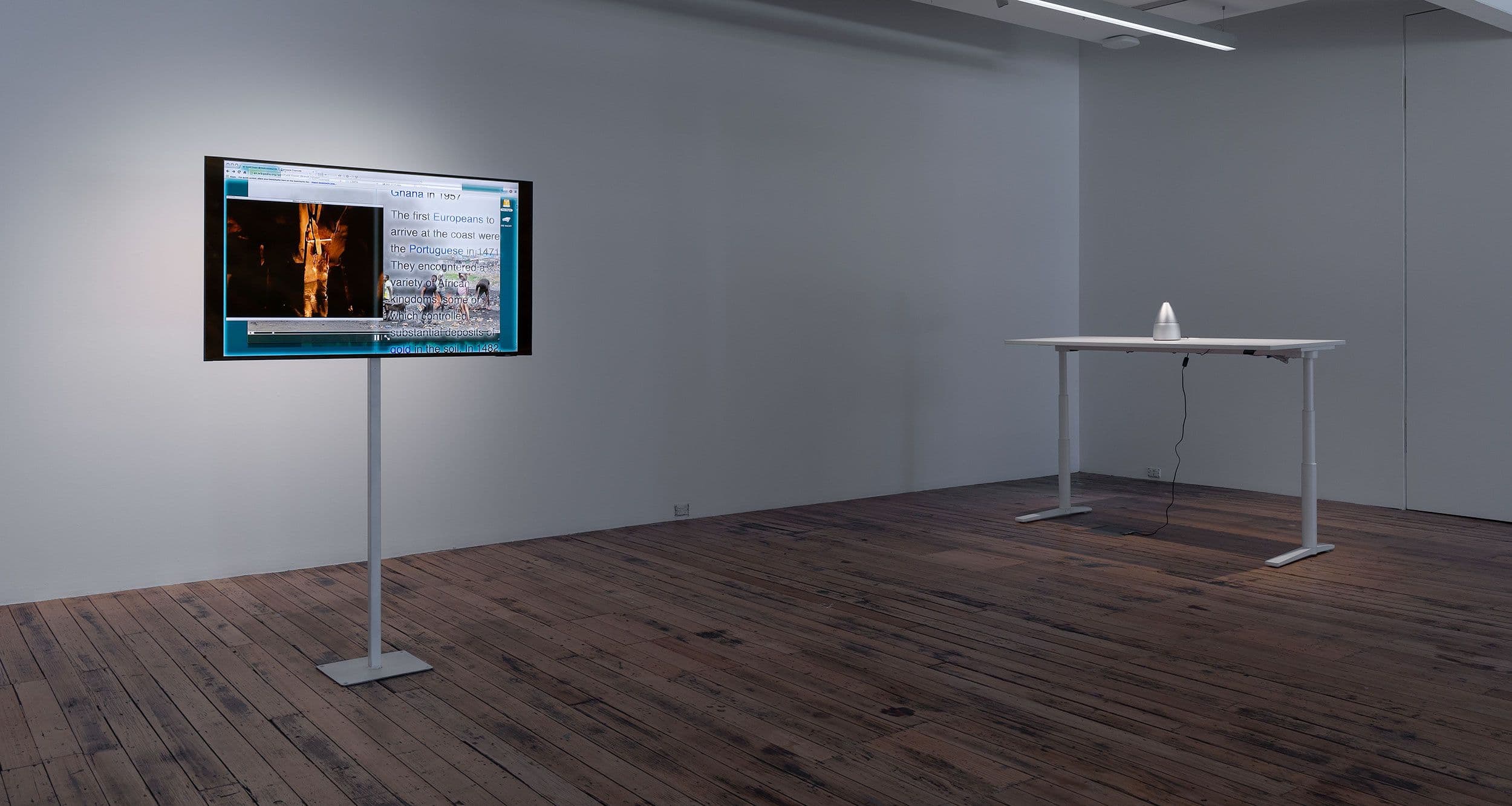
All That Is Solid, installation view, MADA Gallery, Monash University, Naarm/Melbourne, 2022 photo: Christian Capurro.
All That Is Solid the exhibition concludes with the inundation of Los Angeles based, palawa artist Jemima Wyman’s Haze series, incorporating a wallpaper based on Haze 7… and the framed photo collage Haze 5… (both 2021). Wyman’s practice is a labour-intensive process of parsing through found imagery of global activism, here specifically the smoke generated by political action from across the planet. Wyman accompanies her collages with an exhaustive documentation of every cut image’s source, noting the protest action’s subject, location, and date as a means of witnessing. As much as it is an image of vast resistance, the work also conflates this reemphasising of political agency with a sense of tension and obstruction as the field of vision is entirely consumed by these actions. It is both a testament to the power of resistance, but also a site of disorientation, as the multiplying issues that beset contemporary society increasingly cloud our outlook.
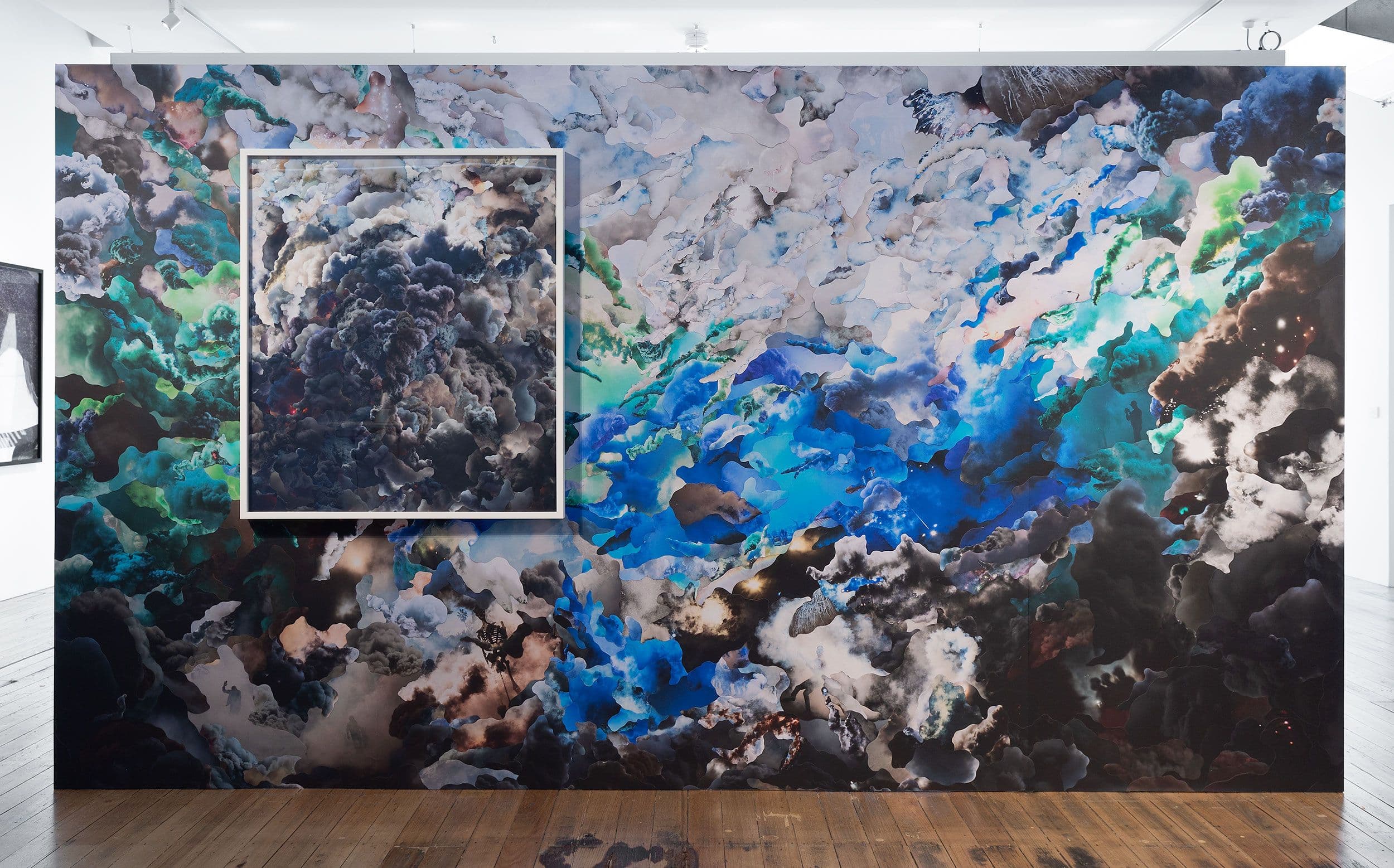
Jemima Wyman, Haze 5…, 2021, hand cut digital photographs, 117 x 101.6 cm, Private collection, Melbourne; Haze 7…, 2021/22, wallpaper, 240 x 427 cm, Courtesy of the artist, Sullivan+Strumpf, Sydney, and Milani Gallery, Brisbane. Photo: Christian Capurro.
Notes
Macarena Gómez-Barris, The Extractive Zone: Social Ecologies and Decolonial Perspectives (Durham, NC: Duke University Press, 2017), 5.
Louis Henderson, All That is Solid, artist’s statement, Video Data Bank, https://www.vdb.org/titles/all-solid.
All That Is Solid
Curated by Tim Riley Walsh
Artists
- Gavin Bell,
- Jarrah de Kuijer,
- Simon McGlinn,
- Simryn Gill,
- Louis Henderson,
- Rachel O’Reilly,
- and Jemima Wyman
6 – 22 October 2022
MADA Gallery
Ground Floor, Building D
Monash University
900 Dandenong Road
Caulfield East VIC 3145
Australia